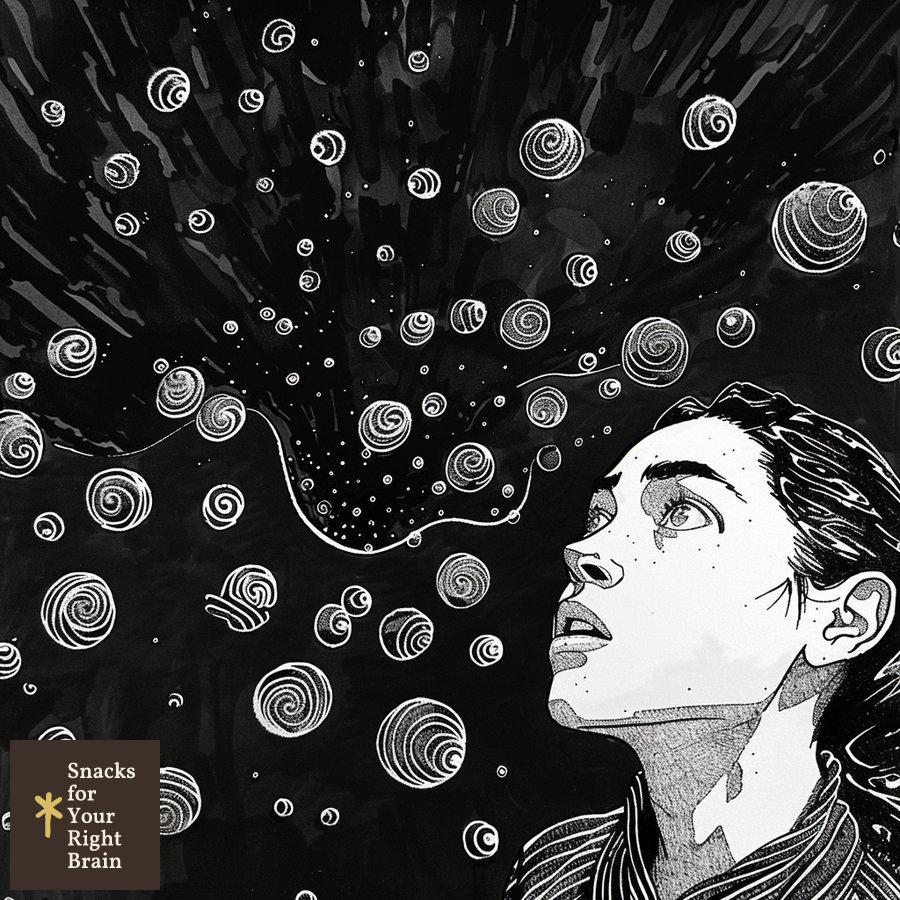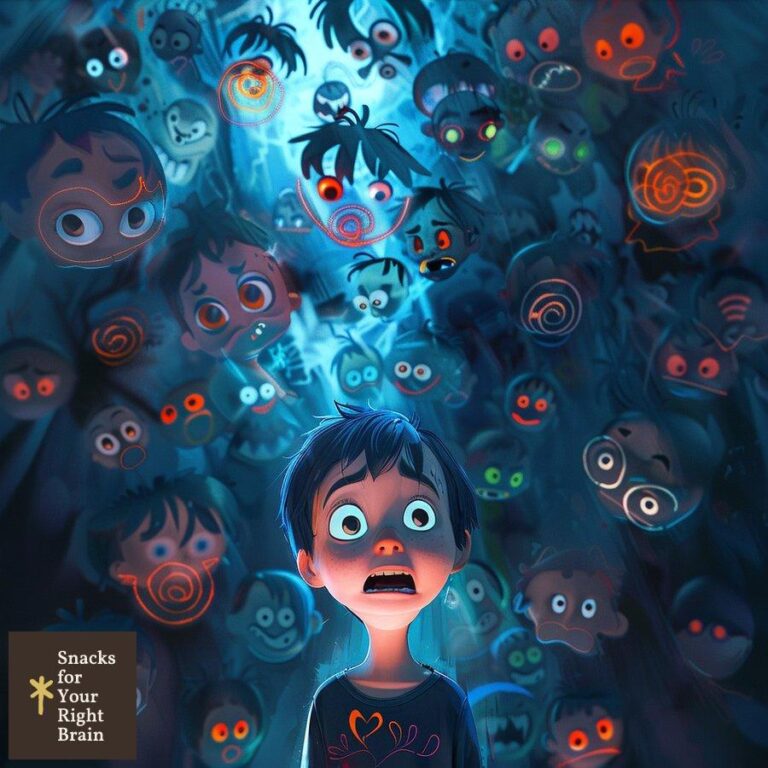What Is a Characters Point of View in a Story
What is a character’s point of view in storytelling?
A character’s point of view (POV) in storytelling refers to the perspective from which the narrative is conveyed. It shapes how readers perceive the events, emotions, and motivations of characters within the story. This perspective can significantly influence the reader’s connection to the narrative, as it determines the information available to them and how they interpret the characters’ actions and thoughts.
Character point of view can be understood through the following semantic triples:
- Character: The individual whose perspective is being portrayed.
- Point of View: The angle or lens through which the story is told.
- Storytelling: The method of conveying a narrative to an audience.
The choice of point of view is essential for establishing the tone, mood, and overall impact of the story. It can evoke empathy, create tension, or provide insight into the character’s psyche.
How does point of view impact reader engagement?
Point of view plays a vital role in reader engagement by influencing how readers connect with the characters and the story. The perspective chosen can either draw readers in or create distance, affecting their emotional investment.
-
First-Person POV: This perspective allows readers to experience events directly through the character’s eyes, fostering a deep emotional connection. The use of “I” or “we” creates intimacy, making readers feel as though they are part of the character’s journey.
-
Second-Person POV: This less common perspective addresses the reader as “you,” creating a unique and immersive experience. It can make readers feel as if they are the protagonist, enhancing engagement through direct involvement in the narrative.
-
Third-Person POV: This perspective can vary in its degree of intimacy. Third-person limited provides insight into one character’s thoughts and feelings, while third-person omniscient offers a broader view of multiple characters, which can either engage or confuse readers depending on execution.
The choice of POV not only affects the reader’s emotional experience but also their understanding of the plot and characters. A well-chosen perspective can enhance suspense, create dramatic irony, and maintain reader interest throughout the narrative.
What are the main types of character point of view?
Understanding the different types of character point of view is essential for writers. Each type offers distinct advantages and challenges, shaping the narrative in unique ways. The main types of character point of view include:
-
First-Person Point of View: The narrator is a character in the story, using “I” or “we.” This perspective provides direct insight into the narrator’s thoughts and feelings, creating intimacy.
-
Second-Person Point of View: The narrator addresses the reader directly as “you.” This perspective is rare and can create a sense of immediacy and involvement.
-
Third-Person Limited Point of View: The narrator is outside the story but focuses on the thoughts and feelings of one character. This creates a balance between distance and intimacy.
-
Third-Person Omniscient Point of View: The narrator knows everything about all characters and events. This perspective provides a comprehensive view but can lead to confusion if not handled carefully.
-
Third-Person Objective Point of View: The narrator reports only observable actions and dialogue without delving into characters’ thoughts or feelings. This creates a detached narrative style.
| Type of POV | Description | Advantages |
|---|---|---|
| First-Person | Narrator is a character in the story, using “I” or “we.” | Intimate connection with the narrator’s thoughts. |
| Second-Person | Narrator addresses the reader as “you.” | Engages the reader directly in the narrative. |
| Third-Person Limited | Narrator focuses on one character’s thoughts and feelings. | Balances distance and intimacy. |
| Third-Person Omniscient | Narrator knows everything about all characters and events. | Comprehensive view of the story. |
| Third-Person Objective | Narrator reports only observable actions and dialogue. | Creates a detached narrative style. |
How does first-person point of view work in fiction?
First-person point of view immerses readers in the narrator’s personal experiences, thoughts, and emotions. This perspective is characterized by the use of first-person pronouns such as “I” and “we.”
The effectiveness of first-person POV lies in its ability to create a strong emotional connection between the reader and the narrator. Readers gain direct access to the narrator’s internal struggles, desires, and motivations, fostering empathy and understanding.
However, this perspective also has limitations. The narrative is confined to the narrator’s experiences, which can restrict the reader’s understanding of other characters and events. It may also lead to biased interpretations, as the narrator’s perspective shapes the portrayal of reality.
Examples of First-Person POV in Fiction:
-
“The Catcher in the Rye” by J.D. Salinger: The protagonist, Holden Caulfield, shares his thoughts and feelings directly with the reader, creating a sense of intimacy and authenticity.
-
“To Kill a Mockingbird” by Harper Lee: Scout Finch narrates her childhood experiences, allowing readers to see the world through her innocent perspective.
When is second-person point of view used effectively?
Second-person point of view is characterized by the use of “you,” addressing the reader directly. This perspective is less common in fiction but can be highly effective in certain contexts.
Effective Uses of Second-Person POV:
-
Interactive Fiction: In genres like choose-your-own-adventure stories, second-person POV engages readers by making them active participants in the narrative.
-
Immersive Experiences: Second-person can create a sense of immediacy and intimacy, drawing readers into the character’s experiences. This is often seen in experimental literature and poetry.
-
Emotional Connection: By addressing the reader directly, second-person POV can evoke strong emotional responses, making the reader feel personally invested in the character’s journey.
Examples of Second-Person POV in Fiction:
-
“If on a winter’s night a traveler” by Italo Calvino: This novel uses second-person narration to create an immersive experience, placing the reader at the center of the story.
-
“Bright Lights, Big City” by Jay McInerney: The narrative addresses the reader as “you,” creating a sense of immediacy and involvement in the protagonist’s life.
What are the advantages of third-person limited point of view?
Third-person limited point of view offers a unique blend of intimacy and distance, allowing readers to connect with a specific character while maintaining an overarching narrative perspective.
Advantages of Third-Person Limited POV:
-
Character Insight: This perspective provides access to the thoughts and feelings of one character, fostering empathy and understanding without overwhelming the reader with multiple viewpoints.
-
Narrative Flexibility: Writers can shift focus between scenes and characters while maintaining a consistent narrative voice, allowing for a more dynamic storytelling approach.
-
Suspense and Mystery: By limiting the reader’s knowledge to one character’s perspective, writers can create suspense and intrigue, as readers uncover information alongside the character.
Examples of Third-Person Limited POV in Fiction:
-
“Harry Potter” series by J.K. Rowling: The narrative primarily follows Harry’s perspective, allowing readers to experience his thoughts and emotions while still providing a broader view of the wizarding world.
-
“The Hunger Games” by Suzanne Collins: The story is told through Katniss Everdeen’s perspective, giving readers insight into her motivations and struggles while maintaining a sense of tension and urgency.
How does third-person omniscient narration function?
Third-person omniscient narration provides a comprehensive view of the story, allowing the narrator to know the thoughts, feelings, and motivations of all characters. This perspective offers a wide-ranging understanding of the narrative, enabling the exploration of multiple viewpoints.
Functions of Third-Person Omniscient POV:
-
Comprehensive Insight: The narrator can delve into the minds of various characters, providing readers with a richer understanding of their motivations and conflicts.
-
Narrative Control: The omniscient narrator can guide the reader’s interpretation of events, shaping their understanding of the story’s themes and messages.
-
Dramatic Irony: This perspective allows for the creation of dramatic irony, where the reader knows more than the characters, enhancing tension and engagement.
Examples of Third-Person Omniscient POV in Fiction:
-
“Pride and Prejudice” by Jane Austen: The narrative shifts between characters, offering insights into their thoughts and feelings while maintaining an overarching commentary on societal norms.
-
“The Lord of the Rings” by J.R.R. Tolkien: The omniscient narrator provides a vast understanding of the world and its characters, allowing readers to grasp the complexities of the epic narrative.
What are the challenges of writing multiple points of view?
Writing multiple points of view presents several challenges that can complicate the narrative structure and reader engagement.

Challenges of Multiple POVs:
-
Consistency: Maintaining a consistent voice and perspective across different characters can be difficult. Writers must ensure that each character’s voice is distinct while still fitting within the overall narrative.
-
Reader Confusion: Frequent shifts in perspective can confuse readers, particularly if transitions are not clearly marked. This can disrupt the flow of the story and diminish engagement.
-
Balancing Focus: Writers must balance the focus on each character, ensuring that no single perspective overshadows others. This requires careful planning and consideration of each character’s role in the narrative.
Strategies to Overcome Challenges:
-
Clear Transitions: Use chapter breaks or section headings to signal shifts in perspective, helping readers adjust to changes in focus.
-
Distinct Character Voices: Develop unique voices and styles for each character, allowing readers to easily identify whose perspective they are experiencing.
-
Limit POV Shifts: Consider limiting the number of perspectives to avoid overwhelming readers and maintain clarity in the narrative.
How do you choose the right point of view for your story?
Selecting the appropriate point of view for a story is a critical decision that can significantly impact the narrative’s effectiveness.
Factors to Consider When Choosing POV:
-
Story Type: The genre and nature of the story can influence the choice of POV. For instance, first-person may work well for personal narratives, while third-person omniscient may suit epic tales.
-
Character Development: Consider which perspective will best showcase the character’s growth and emotional journey. First-person can provide deep insight, while third-person may allow for broader exploration.
-
Reader Engagement: Think about how the chosen POV will affect reader engagement. Will it create intimacy, suspense, or distance? The goal is to enhance the reader’s connection to the narrative.
-
Narrative Voice: The tone and style of the story should align with the chosen POV. A whimsical narrative may benefit from first-person, while a more serious tone may suit third-person limited.
What techniques can improve point of view writing?
Improving point of view writing involves employing various techniques that enhance clarity, engagement, and emotional impact.

Techniques for Enhancing POV Writing:
-
Show, Don’t Tell: Use descriptive language and actions to convey emotions and thoughts instead of simply stating them. This allows readers to experience the character’s feelings more vividly.
-
Internal Monologue: Incorporate internal thoughts to provide insight into the character’s mindset. This technique can deepen the reader’s understanding of motivations and conflicts.
-
Sensory Details: Engage the reader’s senses by incorporating vivid descriptions of sights, sounds, smells, and textures. This enriches the narrative and immerses readers in the character’s experience.
-
Consistent Voice: Maintain a consistent narrative voice that aligns with the chosen POV. This helps create a cohesive reading experience and strengthens the connection between the reader and the character.
How can writers maintain consistent voice and perspective?

Maintaining a consistent voice and perspective is crucial for creating a cohesive narrative. Writers can employ several strategies to achieve this.
Strategies for Consistency in Voice and Perspective:
-
Character Profiles: Develop detailed profiles for each character, outlining their personality traits, speech patterns, and emotional responses. This helps ensure that their voice remains consistent throughout the narrative.
-
Point of View Guidelines: Establish clear guidelines for the chosen POV, including what information is accessible to the narrator and how it is conveyed. This clarity helps maintain consistency in the narrative.
-
Regular Revisions: During the revision process, pay close attention to voice and perspective. Look for inconsistencies or shifts that may confuse readers and revise accordingly.
What is head-hopping and how can it be avoided?
Head-hopping refers to the practice of abruptly shifting between different characters’ perspectives within a single scene or paragraph. This can create confusion for readers and disrupt the flow of the narrative.
Avoiding Head-Hopping:
-
Stick to One POV per Scene: Choose a single character’s perspective for each scene or chapter. This helps maintain clarity and allows readers to fully engage with that character’s experience.
-
Use Clear Transitions: If multiple perspectives are necessary, use clear transitions between scenes or chapters to signal shifts in focus. This allows readers to adjust to the new perspective without confusion.
-
Limit Character Insights: When writing in third-person limited, focus on one character’s thoughts and feelings at a time. This prevents the narrative from becoming muddled and keeps the reader grounded in the character’s experience.
How do unreliable narrators create suspense in fiction?
Unreliable narrators are characters whose credibility is compromised, leading readers to question the truth of their accounts. This narrative technique can create suspense and intrigue, keeping readers engaged as they seek to uncover the reality behind the narrator’s perspective.
Creating Suspense with Unreliable Narrators:
-
Misdirection: Unreliable narrators often present distorted or misleading information, leading readers to form incorrect conclusions. This creates tension as readers try to discern the truth.
-
Gradual Revelation: As the story unfolds, clues may emerge that challenge the narrator’s reliability. This gradual revelation keeps readers on edge, eager to uncover the true nature of events.
-
Emotional Complexity: Unreliable narrators often possess complex motivations and emotions, which can evoke empathy or frustration in readers. This emotional engagement enhances the overall suspense of the narrative.
Examples of Unreliable Narrators in Fiction:
-
“The Catcher in the Rye” by J.D. Salinger: Holden Caulfield’s perspective is shaped by his mental state, leading readers to question his interpretations of events.
-
“Gone Girl” by Gillian Flynn: The alternating perspectives of Nick and Amy create a web of deception, keeping readers guessing about the truth behind their relationship.
What is epistolary narrative and when is it effective?
Epistolary narrative is a storytelling technique that uses letters, diary entries, emails, or other forms of correspondence to convey the story. This format can create a sense of intimacy and immediacy, allowing readers to engage with the characters’ thoughts and emotions directly.
Effectiveness of Epistolary Narrative:
-
Personal Connection: The use of personal correspondence creates a direct connection between characters and readers, enhancing emotional engagement.
-
Multiple Perspectives: Epistolary narratives can incorporate multiple voices, providing diverse viewpoints and enriching the narrative.
-
Realism: The format can lend a sense of authenticity to the story, as readers encounter characters’ thoughts and feelings in their own words.
Examples of Epistolary Narrative in Fiction:
-
“The Perks of Being a Wallflower” by Stephen Chbosky: The story unfolds through letters written by the protagonist, creating an intimate connection with readers.
-
“Dracula” by Bram Stoker: The novel is composed of letters, diary entries, and newspaper articles, providing multiple perspectives on the unfolding events.
How does stream of consciousness deepen character immersion?
Stream of consciousness is a narrative technique that captures a character’s thoughts and feelings in a continuous flow, often resembling the natural thought process. This technique can deepen character immersion by allowing readers to experience the character’s internal world in real-time.
Deepening Immersion with Stream of Consciousness:
-
Intimate Insight: This technique provides direct access to a character’s thoughts, emotions, and sensory experiences, fostering a deeper understanding of their motivations and conflicts.
-
Fluidity of Thought: The unstructured nature of stream of consciousness reflects the complexity of human thought, allowing readers to experience the character’s mental landscape authentically.
-
Emotional Resonance: By immersing readers in the character’s internal struggles, this technique can evoke strong emotional responses, enhancing the overall impact of the narrative.
Examples of Stream of Consciousness in Fiction:
-
“Ulysses” by James Joyce: The novel employs stream of consciousness to explore the thoughts and experiences of its characters, creating a rich and immersive reading experience.
-
“The Sound and the Fury” by William Faulkner: The narrative shifts between different characters’ perspectives, utilizing stream of consciousness to convey their internal struggles and perceptions.
What role does point of view play in creating dramatic irony?
Point of view is instrumental in establishing dramatic irony, a literary device where the audience knows more about a situation than the characters do. This technique can create tension, humor, and emotional depth in a narrative.
Creating Dramatic Irony with Point of View:

-
Omniscient Narration: Third-person omniscient POV allows the narrator to reveal information that characters are unaware of, heightening tension as readers anticipate the characters’ reactions.
-
Limited Perspective: In third-person limited or first-person POV, readers may gain insights into the character’s thoughts while remaining unaware of crucial information, creating a sense of suspense as they wait for the character to discover the truth.
-
Character Misunderstandings: When characters misinterpret situations or other characters’ intentions, readers who possess the full context experience a heightened sense of irony, leading to emotional engagement.
Examples of Dramatic Irony in Fiction:
-
“Romeo and Juliet” by William Shakespeare: The audience knows that Juliet is not truly dead, creating tension as Romeo believes he is acting to save her.
-
“The Great Gatsby” by F. Scott Fitzgerald: The reader is aware of Gatsby’s true feelings for Daisy, while Daisy remains oblivious to the extent of his devotion, creating a poignant sense of irony.
How can writers experiment with unconventional points of view?
Experimenting with unconventional points of view can lead to innovative storytelling and fresh narrative experiences. Writers can explore various techniques to challenge traditional perspectives.
Methods for Experimenting with POV:
-
Nonlinear Narratives: Shifting between different time periods or perspectives can create a complex narrative structure that engages readers in piecing together the story.
-
Unconventional Narrators: Using non-human narrators, such as objects or animals, can provide unique insights and challenge readers’ perceptions of reality.
-
Fragmented Perspectives: Presenting multiple viewpointsFragmented Perspectives: Presenting multiple viewpoints in a disjointed manner can create a sense of confusion or chaos, mirroring the characters’ experiences. This technique can be particularly effective in conveying themes of mental instability or societal breakdown.
Examples of Unconventional Points of View in Fiction:
-
“House of Leaves” by Mark Z. Danielewski: This novel employs multiple narrators and a complex structure, challenging traditional storytelling conventions and immersing readers in a labyrinthine narrative.
-
“The Brief Wondrous Life of Oscar Wao” by Junot Díaz: The narrative shifts between various characters and perspectives, blending history, pop culture, and personal stories to create a rich tapestry of experiences.
Conclusion
Understanding a character’s point of view is essential for both writers and readers. The chosen perspective shapes how the story is told, influencing reader engagement, emotional connection, and overall narrative impact. By exploring the various types of point of view, their advantages and challenges, and experimenting with unconventional approaches, writers can craft compelling narratives that resonate deeply with their audience.
Incorporating techniques that enhance point of view writing, maintaining consistent voice and perspective, and being mindful of the effects of unreliable narrators and dramatic irony can elevate a story’s emotional depth and complexity. Ultimately, the point of view serves as a powerful tool in storytelling, guiding readers through the intricate worlds created by writers and fostering a profound connection with the characters and their journeys.






